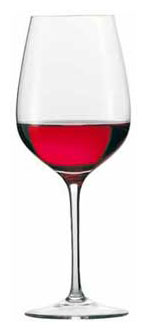 The way in which your wine is stored and handled has every bit as much to do with its taste as does the way it’s made. Wine is a food, so proper storage is critical. If you’re a serious wine connoisseur, storing and handling your favorite vintages is a serious matter. This five -part blog series was recently rewritten in great detail with even more useful information about Proper Wine Storage in Wine Cellars.
The way in which your wine is stored and handled has every bit as much to do with its taste as does the way it’s made. Wine is a food, so proper storage is critical. If you’re a serious wine connoisseur, storing and handling your favorite vintages is a serious matter. This five -part blog series was recently rewritten in great detail with even more useful information about Proper Wine Storage in Wine Cellars.
Wine coolers, temperature & humidity controls, storage angles for wall mounted wooden wine racks, and insights on crystal decanters as dispensary items are just some of the information available in this post.
Wine Storage Temperature
Maintaining the optimal temperature and avoiding wild temperature swings is critical for proper wine storage.
Wine can be stored safely from 40° to 65°F (4° to 18°C). The optimal storage temperature depends on the wine’s age and how long it will be stored. If the bottle will be opened within a year or two, a warmer temperature of 60-65°F (15° to 18°C) will speed the development of bottle bouquet. An 18°F (7°C) increase in temperature will double the rate of chemical reactions. Storage at elevated temperatures more than typical room temperature at 70°F (21°C) cause undesirable changes as various reactions are accelerated, but at different rates. The result is a lack of balance in the aging process. Even fluctuations of more than 5° to 10°F (2° to 4°C) are undesirable.
If your intention is to store your wine for longer term, cooler temperatures are desired. Quality white wines are usually consumed sooner than red wines but can benefit by cooler storage. In this case the esters, or fruity character disappear more rapidly at warmer temperatures.
Effects of poor temperature control
Heat damage: wine is cooking at 80°F. Cooked wine may smell burnt or like a fruit stew.
Slow aging: wine stored below 50°F hardly ages at all.
Particles: at lower temperatures, tartaric acid crystals could form.
Oxidation: wine exposed to excessive oxygen will age faster. Temperature fluctuations and high temperatures can break the seal of the cork, thereby exposing the wine to air or cause a pressure differential which pulls air into the bottle.
What can you do?
During cellar construction, minimize the potential sources of cool loss within the room. This will allow for the most controlled environment for your prized wine collection.
View our selection of wine coolers with adjustable temperature controls, and wine cellar cooling units for full environmental control.
Rosehill also offers a variety of hydrometers, hygrometers, wine thermometers and wine gauges for both your wine cellar or bottle: Wine & Humidity Gauges.
This five -part blog series was recently rewritten in great detail with even more useful information about Proper Wine Storage in Wine Cellars. Thanks for reading Rosehill’s Proper Wine Storage series. In case you missed any entries, here they are for your enjoyment:
Part One: Temperature – Proper Wine Storage is Key to Great Tasting Wine
Part Two: Humidity – Proper Wine Storage is Key to Great Tasting Wine
Part Three: Light – Proper Wine Storage is Key to Great Tasting Wine
Part Four: Storage Angle – Proper Wine Storage is Key to Great Tasting Wine
Part Five: Vibration & Ventiliation – Proper Wine Storage is Key to Great Tasting Wine





